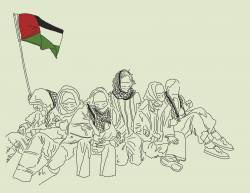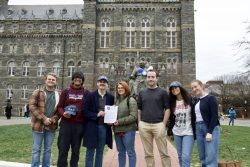After many months of construction, the Southwest Quadrangle project is complete. Students have been moving in, and the building should be filled to capacity by this time next week, mostly with sophomores surly for having been denied a shot at a Village A rooftop. For the first-years who are arriving on campus, the Quad will be just one more unfamiliar location in a puzzling new environment. For the rest of us, it is a welcome and unexpected addition. We’ve known it’s coming, and we’ve watched it go up. But we didn’t expect it to actually look good.
The last time Georgetown University erected a significant building with the simple, classic and tasteful design demonstrated by the Southwest Quad was in 1932, when White-Gravenor was completed at the north end of the main quad. White-Gravenor joined a campus that was already blessed with Healy and Copley Halls. Since then, Georgetown has gained such curios and mediocrities as New South in 1959, Lauinger Library (intended as an “interpretation” of Healy Hall) in 1970, and the Bunn Intercultural Center in 1982.
They’re all more or less suited to the purposes for which they were designed-the ICC is especially functional, as the huge expanse of solar panels on its south side supply a proportion of the building’s power-but they’re also plain ugly. The only partial exception in post-war architecture is Village C, which has a distinctive roofline, but any attraction to its exterior is cancelled out by its dingy halls.
The three dormitories that make up the Southwest Quadrangle, on the other hand, are tasteful and balanced. They have muted brick, distinctive windows and clean lines. The dorm rooms have nice furniture and tons of common space-including several study rooms per floor-and the dining hall has great views of the Potomac River.
Perhaps most importantly, the buildings don’t overwhelm the surrounding space. The pedestrian paths around the Quad instead feel intimate and protected. Within a few years, they will be a Georgetown tradition, through and through. The members of the University community responsible for the project’s design, including countless participants in assorted planning meetings, should be commended for having helped produce such a welcome addition to Georgetown’s campus.




